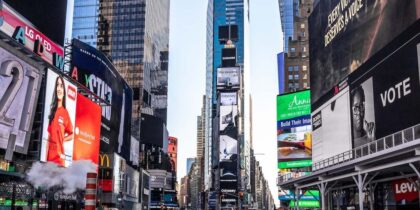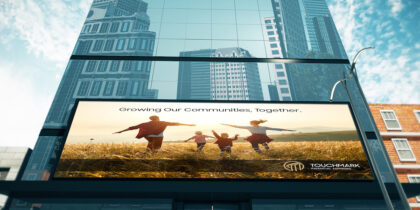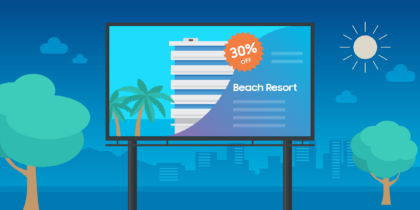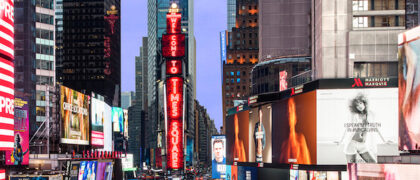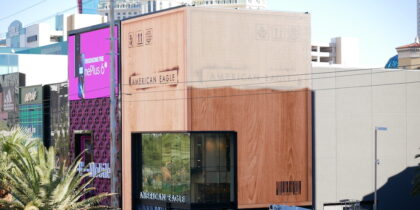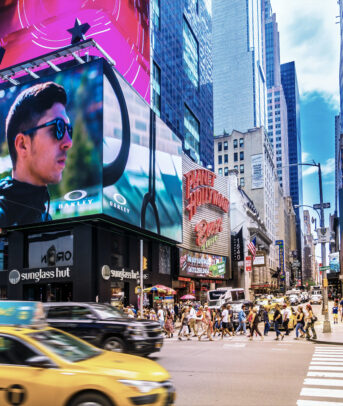Outdoor LED signage has become indispensable for organizations looking to offer relevant, easily updated information, alerts and advertising.
But before purchasing LED outdoor signage for your business, you must ensure you’re making a well-informed investment. Your digital signage is likely to last at least 10 years; careful planning will help ensure a successful experience, longer lifetime and lower cost.
Here are eight key factors to consider as you look for the best outdoor LED display screen to meet your needs:
1. Environmental ruggedness
Depending on where your outdoor digital sign is located, you may need to consider how it operates in hot or cold temperatures, as well as in rain, snow, wind, dust and humidity. Against these elements, the design of your screen and its enclosure is critical to the continuous operation and lifespan of the LEDs.
In terms of environmental factors, your first consideration should be removing heat from both the LED elements and their driving electronics. Ask any vendor about their thermal management solution and its ability to maintain LED temperatures within the elemental conditions you anticipate. To protect your signage from the elements, check that the enclosure design meets specifications for resistance to water, dust, humidity, etc. — whatever concerns apply to your location.
2. Support every step of the way
Can your potential supplier offer support and advice for the screen’s design and permitting process? Will they listen to all stakeholders and design a solution that fits their needs? Can they work with a customer project leader or recommend a qualified installer?
Hopefully, the answer to these questions is yes. You want a partner in this process, not simply a vendor.
3. Maintenance and servicing
Once your LED outdoor signage is installed, routine maintenance and servicing are critical to ensuring it always looks great and lasts as long as possible. Ask your vendor how often calibration is required — and how easy it is to accomplish — to ensure consistent image quality for years to come.
Similarly, establish how and when the screen will be serviced. Some vendors, such as Samsung, offer a network operations center (NOC) option to constantly monitor your sign and send a technician to fix any issues before you may even be aware of them. To avoid downtime, servicers will need easy access, too, so establish protocols for that.
4. A successful track record
How long has your potential LED supplier been in business? What are other customers’ experiences? Will the supplier be around in 10 years? Will they be responsive to any needs you may have after installation?
To ensure you get the best outdoor LED display possible, ask for references and referrals from their previous customers, especially for jobs done five or more years ago, to get insight into the provider’s integrity.
How to plan and deploy direct view LED signage
Everything you need to know about choosing your LED displays for optimal viewing indoors and out. Download Now
5. Attention to safety
To local and state governments, your display brightness can be a major safety concern. A sign that’s too bright may distract drivers and make it difficult to drive at night. Check if your LED display has an auto-dimming capability to lower the screen’s brightness relative to surrounding light, which should minimize it at night, saving power and keeping drivers’ eyes on the road.
The materials used in the LED screen and its enclosure can also lower the risk of dangerous signage failures and assuage any safety concerns. Look for products certified by Underwriters Laboratory (UL), which imposes strict safety requirements.
6. Price and warranty
You may be tempted to choose the least expensive LED signage option, but you’re likely to get what you pay for. Low-cost suppliers use lower-quality materials — not military-grade components. Their design teams may not ensure the safety and longevity of your signage. And they may under-specify the screen’s performance to lower the cost.
Many signage suppliers offer a warranty, but check the fine print to make sure you understand the exceptions and limitations. Here’s where you may be better off going with a trusted brand, even if it costs a bit more. Ultimately, smartly designed and well-built LED advertising screens will deliver greater overall savings.
7. Choose the best integrator
Your LED supplier may not always be the organization that physically installs the screen. In many cases, you may end up hiring an architect, consultant or project manager to oversee or carry out the installation. Is your LED supplier ready and willing to work with these managers?
You may also simply want to appoint an installer who can manage the entire project. Can your supplier suggest a qualified installer? Again, check their references and ask about the success of previous installations.
8. Visual quality
Outdoor signage is meant to draw the attention of passersby and communicate a message about your brand. The vividness of the image has a significant impact on how that message is received. Your outdoor LED signage should be bright and vibrant, and it should display colors accurately. Skin tones that look washed out, for example, will draw negative attention, so check the LED supplier spec sheet to be sure the display shows true-to-life color.
Another key consideration is pixel pitch, in other words, the space between RGB pixels. It’s important you choose a vendor that will match the right pixel pitch for the viewing distance. Over specifying the pitch may cost more, but if the pixel pitch is too large, the visual quality may suffer.
Establishing an outdoor LED signage solution can be a daunting task with many moving parts — and concerns about visual quality, cost, safety and reliability. Starting with these eight tips in mind, you’ll be prepared to ask the right questions and set your project up for success.
For an array of innovative display options, check out the full lineup of LED outdoor signage by Samsung, designed to weather and outshine all sorts of unpredictable environments. Whether it’s one screen or dozens, you can configure and tailor their messaging in real time using an integrated CMS, as explained in this free complete guide.


